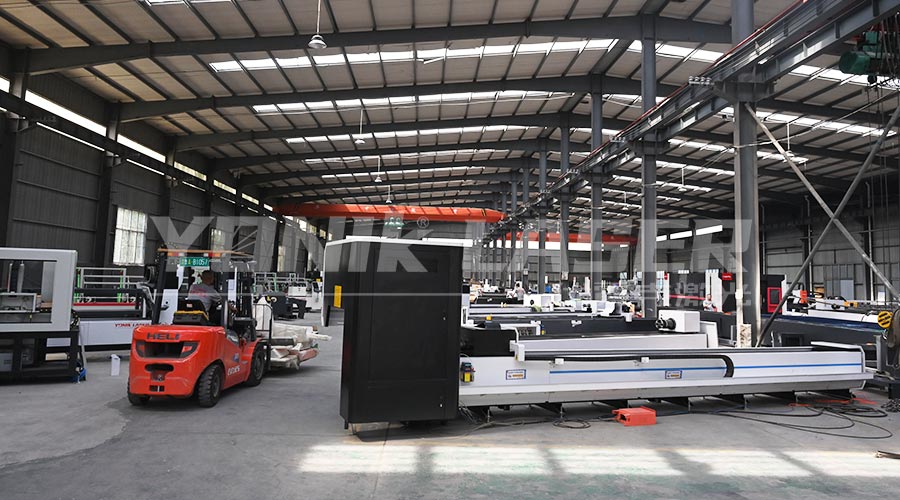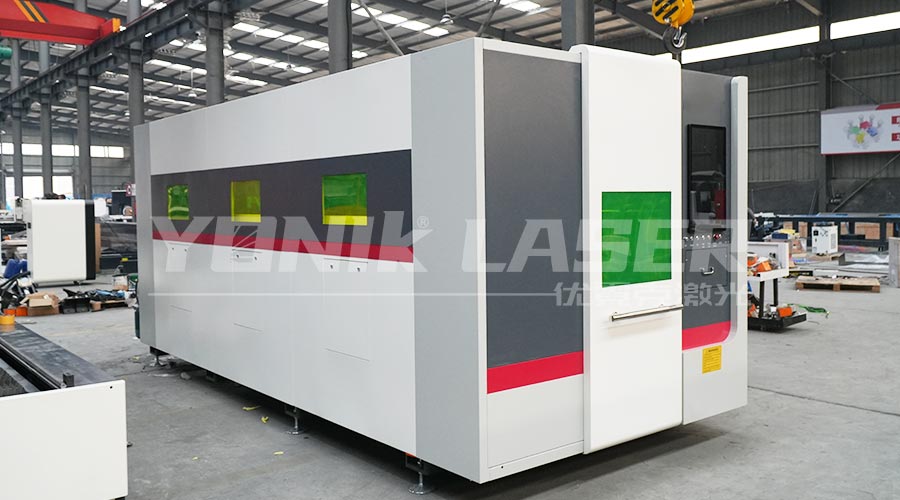In the context of manufacturing industry transformation and upgrading, fiber optic laser cutting machines have become core equipment in sheet metal processing, aerospace, automotive manufacturing, and other fields due to their high efficiency, precision, and strong adaptability. However, faced with a wide range of products from numerous brands and varying parameters on the market, how to scientifically evaluate the comprehensive performance of a fiber optic laser cutting machine has become a critical factor in enterprise procurement decisions. This article will analyze the evaluation framework from four dimensions: technical parameters, cutting quality, equipment stability, and cost-effectiveness, to help you establish a systematic assessment approach.

1. Core Technical Parameters: The Foundation of Performance
To evaluate the comprehensive performance of a fiber optic laser cutting machine, priority should be given to its core technical parameters, which directly determine the equipment’s processing capabilities and scope of application.
1.1 Laser Type and Power
The core of a fiber optic laser lies in its light source quality. High-quality equipment typically uses imported or high-stability domestic fiber optic lasers (such as brands like IPG, Raycus, and Chuangxin), with power ranging from 500W to 12,000W. Power selection should align with processing needs:
500-2000W: Suitable for cutting thin plates (<8mm), such as precision processing of stainless steel and carbon steel;
3000-6000W: Covers medium- and thick-plate cutting (8-20mm), balancing efficiency and precision;
8000W and above: Designed for cutting thick plates (>20mm), such as in shipbuilding and steel structure industries.
It is important to note that power overstatement is a common issue in the industry. Actual output capacity can be verified by cutting thick plate samples (e.g., 20mm carbon steel).
1.2 Beam Quality (BPP Value)
Beam quality (Beam Parameter Product, BPP) is a core indicator for measuring laser focusing ability. A smaller BPP value indicates a more concentrated beam and higher cutting precision. High-quality fiber optic laser cutting machines typically have a BPP value below 4mm·mrad, enabling finer cuts and smaller heat-affected zones. During testing, cut 0.5mm stainless steel thin plates to observe whether the切口 is vertical and free of burrs.
1.3 Cutting Speed and Acceleration
Cutting speed (m/min) and machine acceleration (G-value) directly impact production efficiency. For example, a 3000W machine should achieve a cutting speed of over 30m/min for 3mm stainless steel, with acceleration exceeding 1G (9.8m/s²) to ensure precision during rapid directional changes. Complex graphics such as star shapes or circles can be cut to verify the equipment’s dynamic performance.
2. Cutting Quality: Performance in Practical Applications
No matter how excellent the parameters are, the actual cutting effect is the ultimate test. The following are key dimensions for evaluating cutting quality:
2.1 Cut Verticality and Roughness
The切口 of a high-quality fiber optic laser cutting machine should be perpendicular to the material surface, with a verticality error of less than 1°. The surface roughness (Ra value) of the切口 should be below 10μm. A microscope can be used to observe whether the cross-section of the切口 is flat and free of stepped textures.
2.2 Heat-Affected Zone (HAZ) Control
The heat-affected zone is the area where material properties change after laser cutting. A smaller HAZ width reduces the risk of material deformation. For example, when cutting 2mm aluminum plates, the HAZ width should be controlled within 0.2mm. The HAZ range can be assessed using a metallographic microscope or a hardness tester.
2.3 Cutting Capability for Complex Graphics
Actual production often requires cutting complex graphics such as small holes, sharp corners, and narrow slots. During testing, request the equipment to cut small holes with a diameter of 0.5mm (carbon steel) or narrow slots with a width of 1mm (stainless steel), and observe whether there is slag adhesion or deformation.
3. Equipment Stability and Durability: The Guarantee of Long-Term Value
Stability determines whether the equipment can operate efficiently over the long term and should be assessed from the following aspects:
3.1 Mechanical Structure and Transmission System
High-quality equipment uses high-precision rack-and-pinion systems, linear guides, and servo motors to ensure long-term operation without wear and precise positioning. An idle running test (continuous operation for 8 hours) can be conducted to observe whether the machine tool produces abnormal noises or vibrations.
3.2 Cooling System and Protection Level
The laser and cutting head should be equipped with an independent cooling system (such as a water chiller), with temperature control accuracy reaching ±1°C. The equipment’s protection level should be IP54 or higher to adapt to dusty processing environments.
3.3 Failure Rate and Maintenance Costs
Understand the warranty period for core components (such as lasers and cutting heads) and the replacement frequency of wearing parts. For example, the lens life of imported cutting heads should exceed 10,000 hours, while domestic lenses should last no less than 5,000 hours.

4. Cost-Effectiveness: The Ultimate Measure of Comprehensive Performance
To evaluate the comprehensive performance of a fiber optic laser cutting machine, it is necessary to balance procurement costs with long-term benefits:
4.1 Initial Procurement Cost
Price differences mainly stem from the laser brand, machine tool precision, and configuration. For example, equipment equipped with IPG lasers is typically 30%-50% more expensive than that with domestic lasers but offers better stability.
4.2 Operating Costs
Operating costs include electricity, auxiliary gas consumption, and the replacement of wearing parts. For example, when cutting 1mm stainless steel, nitrogen consumption is approximately 15m³/hour. With electricity priced at 1 yuan/kWh, the hourly operating cost of a 3000W machine is about 12 yuan.
4.3 Production Efficiency and Capacity Improvement
Calculate the efficiency gains brought by the fiber optic laser cutting machine compared to traditional plasma or flame cutting. For example, a 3000W machine cuts 3mm stainless steel three times faster than plasma cutting and eliminates the need for secondary grinding.
5. After-Sales Service and Technical Support: An Extension of Performance
The comprehensive performance evaluation of equipment must also consider the manufacturer’s service capabilities:
Response Speed: Whether technicians can arrive at the site within 24 hours after a fault is reported;
Training System: Whether comprehensive training on operation, programming, and maintenance is provided;
Software Upgrades: Whether cutting process databases are regularly updated to adapt to new materials and demands.
Conclusion
To evaluate the comprehensive performance of a fiber optic laser cutting machine, a systematic analysis from five dimensions—technical parameters, cutting quality, stability, cost-effectiveness, and after-sales service—is required. It is recommended that enterprises request sample cutting tests from manufacturers before procurement and conduct on-site visits to user cases to ensure that equipment performance closely matches production needs. By scientifically evaluating and selecting a machine that offers “authentic parameters, precise cutting, stable operation, and controllable costs,” enterprises can gain a key advantage in enhancing their competitiveness.
2025-07-22
2025-07-21
2025-07-19